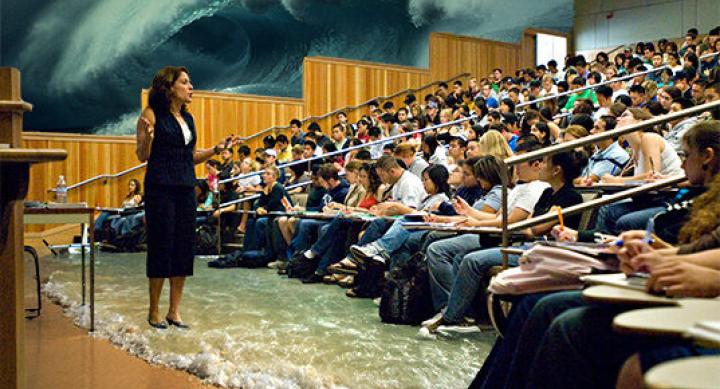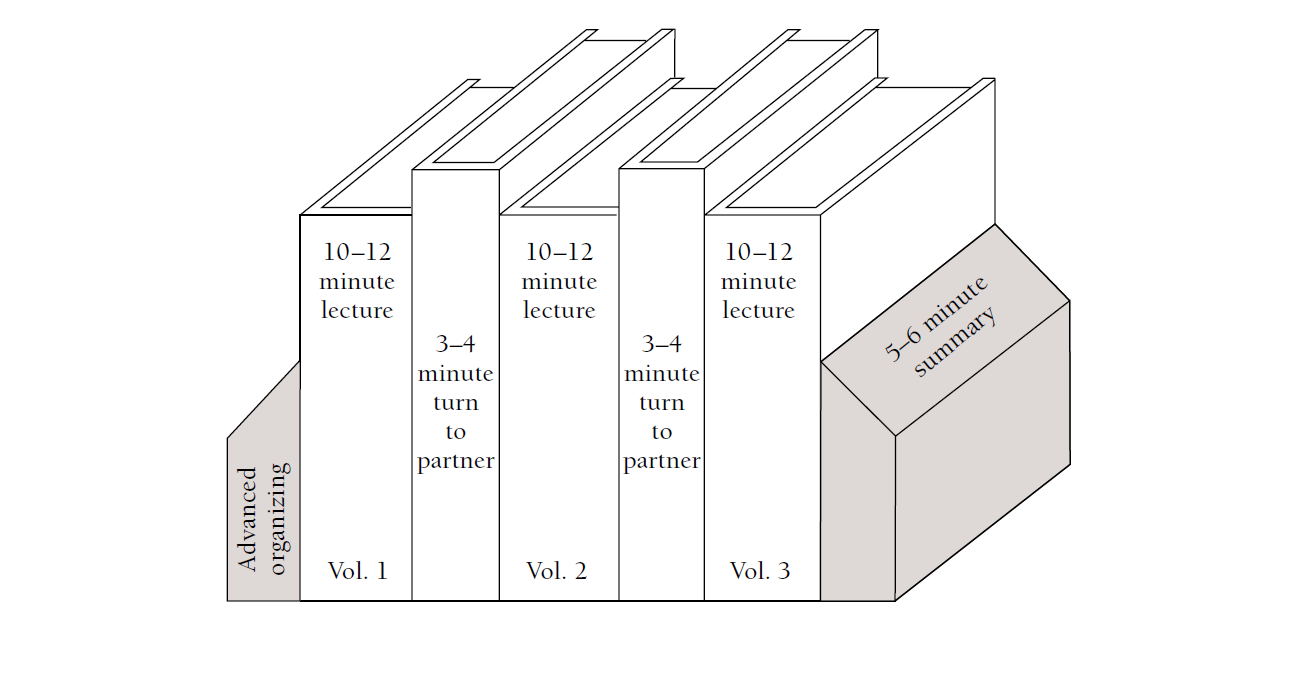
We generally think of large classes as including 100 students or more. But whether you have 50 or 1,000 students, if your class feels big, there are important design considerations that promote a successful learning experience for all.
The increased size of the class increases the need for structure and the importance of particular decisions you face as you plan your large class.
How Do I Build Active Learning into My Course?
Lectures are often the primary instructional strategy for large classes, but we know from research that your students won’t learn or retain much by sitting in class just listening to you lecture, memorizing content, and regurgitating answers. Active learning gives students a way to apply and use what they learn.
You can use the “bookend approach” (Smith, 2000) to structure active learning into your classes. In this design, the class opens with explanation of goals and an engagement activity—a question or task to spark student curiosity and help you discover what they already know about the material. The middle part is a series of back-and-forth transitions between lecture and student work, done individually or collaboratively. The final bookend activity is a summary or guided reflection on the class.

- Break it up. Break up the lecture and see what students are learning by strategically using instructional activities such as problem-solving tasks, role-play, and demonstrations.
- Pull students in. Build in assessments that check for learning during instruction to engage your students.
- Remember technology is your friend. Use tools (e.g., classroom response systems, smartphones, Twitter, etc.) to increase student engagement, spark discussion, and discover what students are learning.
- Mix it up. Challenge yourself and your students by adding new activities to avoid the rut of using the same technique every day.
How Do I Manage a Large Course?
When your course has as many students as a small city, it is important to think through and plan for issues of classroom management. These include: distractions that arise (talking, off-topic technology usage, late arrivals, early departures, etc.); the needs of each student (who's not attending, falling behind, or not following along; how can I include all students, etc.); and paperwork and grading (completing the sheer volume of work, providing helpful feedback, responding to questions, etc.).
- Organize your syllabus to be a map of the course, a statement of policies, and a record of student and teacher expectations.
- Create and communicate course policies that students—and you—can count on.
- Know your students: who are my students, what do they know, what do they need, and how do I know these things?
- Let students know you.
- Use Canvas to communicate frequently with your students. Remember that emails via Canvas will appear with conistent subject lines for easy identification, and the course archive retains records of all communication.
- Remind students frequently of your office hours and your team’s availability to help and support.
- Write detailed rubrics so students know what’s expected -- this will improve the quality, or at least the consistency, of their work and also reduce redundant requests for clarification.
How do I support TA and UGA teams?
TAs and UGAs are vital parts of your course and need support in managing and improving their work. Part of your course involves their learning. Consider these suggestions as you plan:
- Support their professional learning.
- Provide regular professional development for teaching skills (tips for learning students’ names, strategies for discussion, ideas for identifying and supporting at-risk students, effective feedback, etc.).
- Enlist support from Graduate Student Development.
- Meet regularly to establish clear and consistent communication and support.
- Let students know that TAs and UGAs are all part of a cohesive teaching team.
Explore More

Course Design
As in smaller classes, you need to assess the situational factors, determine learning outcomes, design learning activities to realize your outcomes, and plan assessments.

Group Learning
Working in groups, when they’re set up for success, strengthens students’ learning.

